Carrollton, TX Pollen and Allergy Report for Summer 2023
Pollen Allergy Trends in Carrollton, TX
When is pollen lowest in Carrollton, TX?

February
Lowest month total PPM
Avg. PPM
When is pollen highest in Carrollton, TX?

March
Highest month total PPM
Avg. PPM
How does pollen in Carrollton, TX compare to Texas?
Carrollton has a lower average PPM than the state of Texas.
Carrollton yearly avg PPM:
Texas yearly avg PPM:
How does pollen in Carrollton, TX compare to the USA?
Carrollton has a higher average PPM than the USA.
Carrollton yearly avg PPM:
USA yearly avg PPM:
Is pollen worse this year in Carrollton, TX?
Spring 2023 was about the same as 2022.
Spring 2023 PPM:
Spring 2022 PPM:
Average PPM in Carrollton, TX
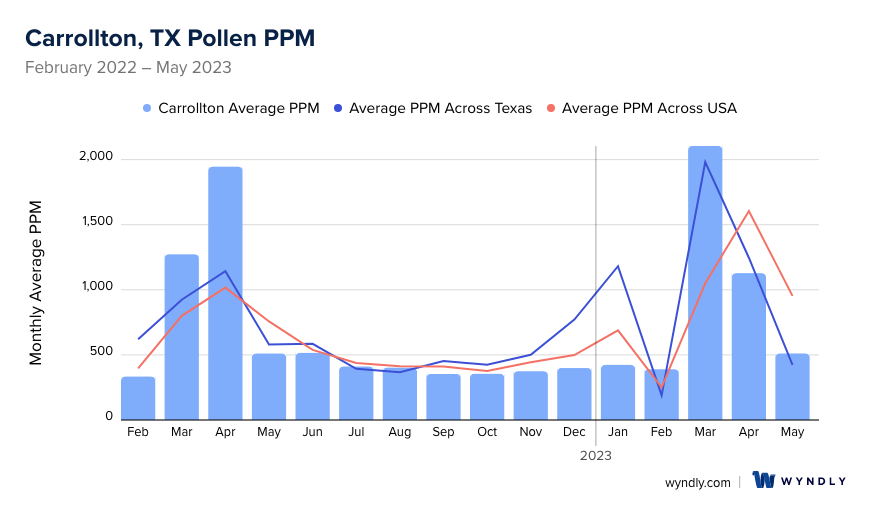
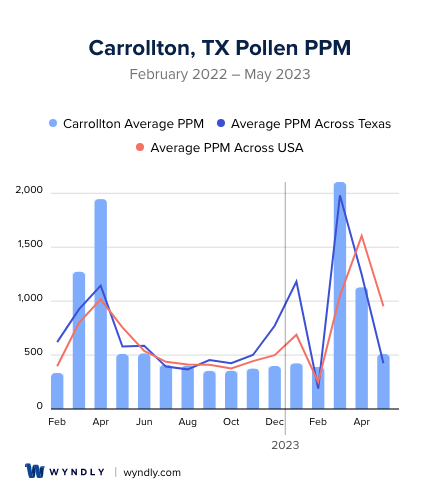
Carrollton, TX Pollen and Allergy Breakdown by Month
Grass
When is grass pollen highest in Carrollton, TX?
April has the highest grass pollen in Carrollton, TX with an average PPM of
When is grass pollen lowest in Carrollton, TX?
October has the lowest grass pollen in Carrollton, TX with an average PPM of
Tree
When is tree pollen highest in Carrollton, TX?
March has the highest tree pollen in Carrollton, TX with an average PPM of
When is tree pollen lowest in Carrollton, TX?
October has the lowest tree pollen in Carrollton, TX with an average PPM of
Weed
When is weed pollen highest in Carrollton, TX?
June has the highest weed pollen in Carrollton, TX with an average PPM of
When is weed pollen lowest in Carrollton, TX?
February has the lowest weed pollen in Carrollton, TX with an average PPM of
Carrollton, TX Pollen Monthly Breakdown by Pollen Type
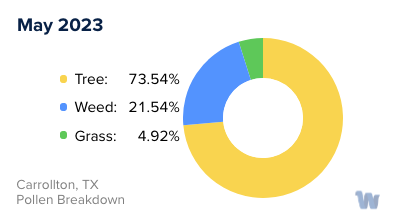
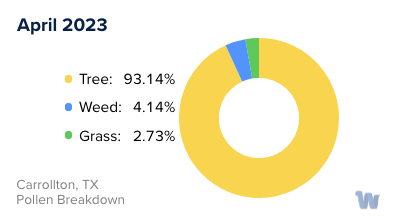
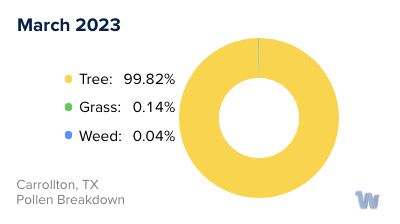
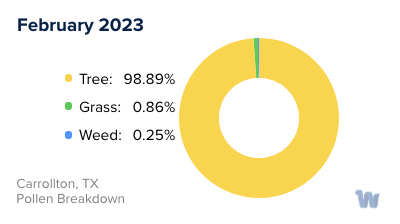
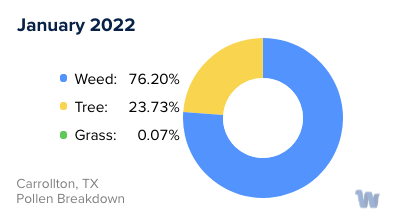
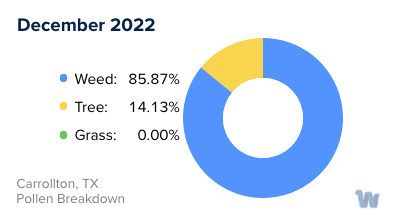
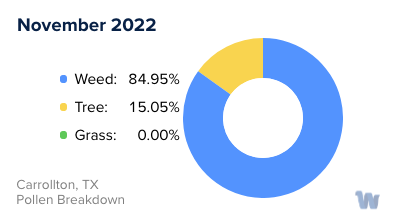
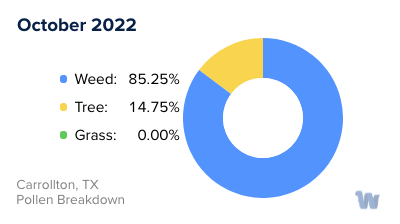
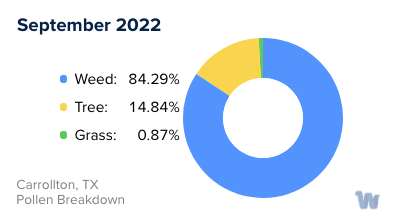
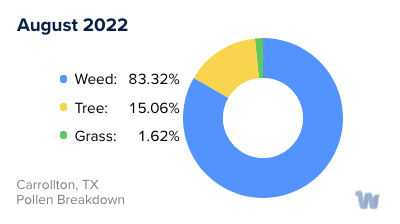
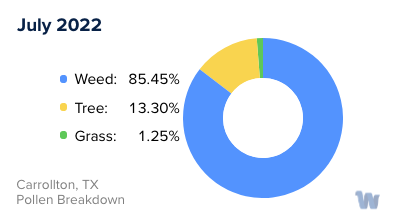
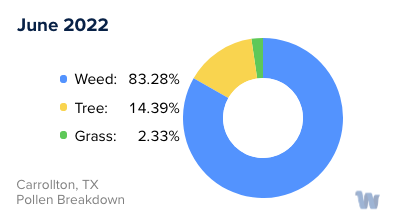
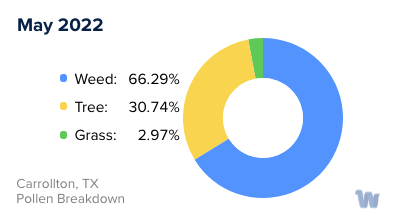
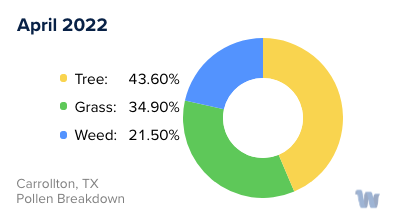
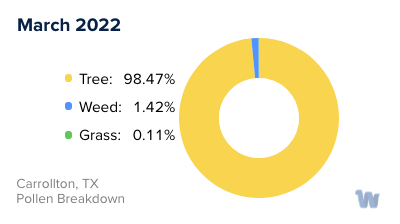
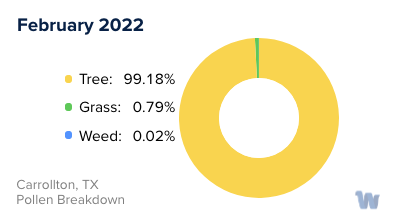
Pollen and Hay Fever in Carrollton, TX
Pollen allergies, commonly known as hay fever, affect a significant number of individuals in Carrollton, Texas, especially during certain times of the year. Hay fever is an allergic reaction triggered by the pollen released by plants, and it can cause a range of uncomfortable symptoms.
In Carrollton, Texas, several types of pollen contribute to hay fever symptoms. One of the most common culprits is oak pollen, which is prevalent during the spring season. The towering oak trees found in the area release abundant pollen particles, causing many individuals to experience symptoms such as sneezing, itching, and congestion.
Another significant source of pollen in Carrollton is grass pollen. As temperatures rise and summer approaches, grasses begin to bloom, releasing pollen into the air. Grass pollen can be a major trigger for hay fever symptoms, affecting a large portion of the population in the area. Symptoms commonly associated with grass pollen allergies include watery eyes, runny nose, and fatigue.
Ragweed is another troublesome pollen in Carrollton. This weed typically releases its pollen in the late summer and early fall, making it a primary allergen during those months. Ragweed pollen can cause severe hay fever symptoms, including sneezing fits, nasal congestion, and itchy throat.
The seasonal variations in pollen levels in Carrollton lead to distinct periods of increased allergy activity. Springtime, with its high oak pollen levels, tends to be a challenging season for hay fever sufferers. Summer brings the onslaught of grass pollen, while fall sees the rise of ragweed pollen. These seasonal shifts create a cyclical pattern of hay fever symptoms throughout the year.
For individuals living in Carrollton, Texas, managing hay fever symptoms can be a challenge during the peak pollen seasons. Understanding the types of pollen prevalent in the area and the seasons in which they are most active can help individuals better prepare and minimize their exposure. Consulting with healthcare professionals can provide personalized guidance and strategies for managing pollen allergies effectively.

